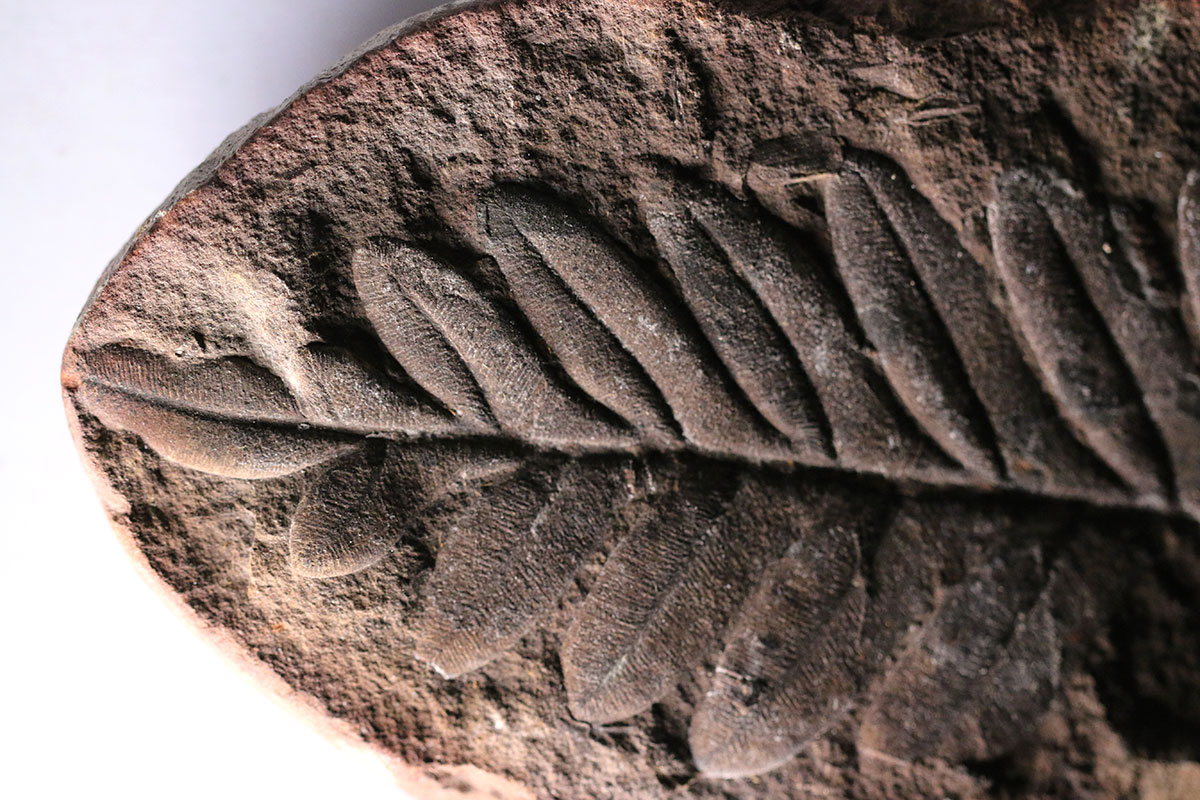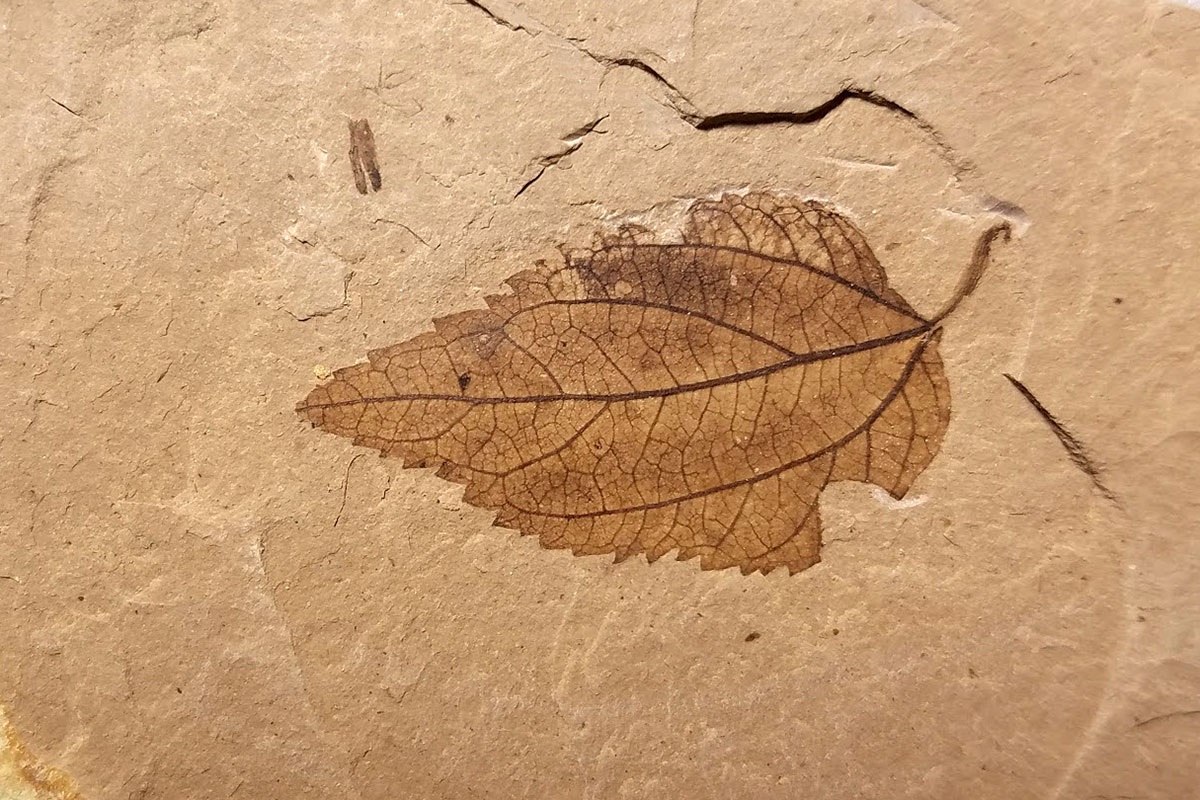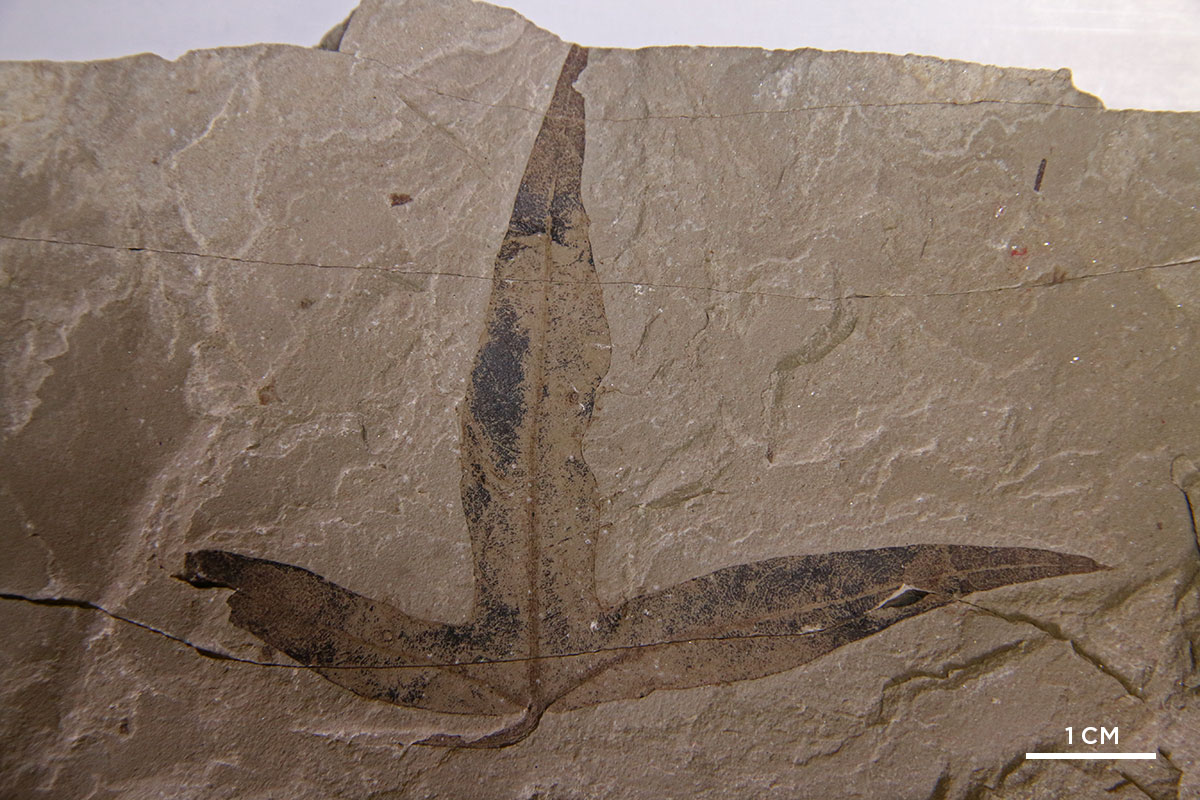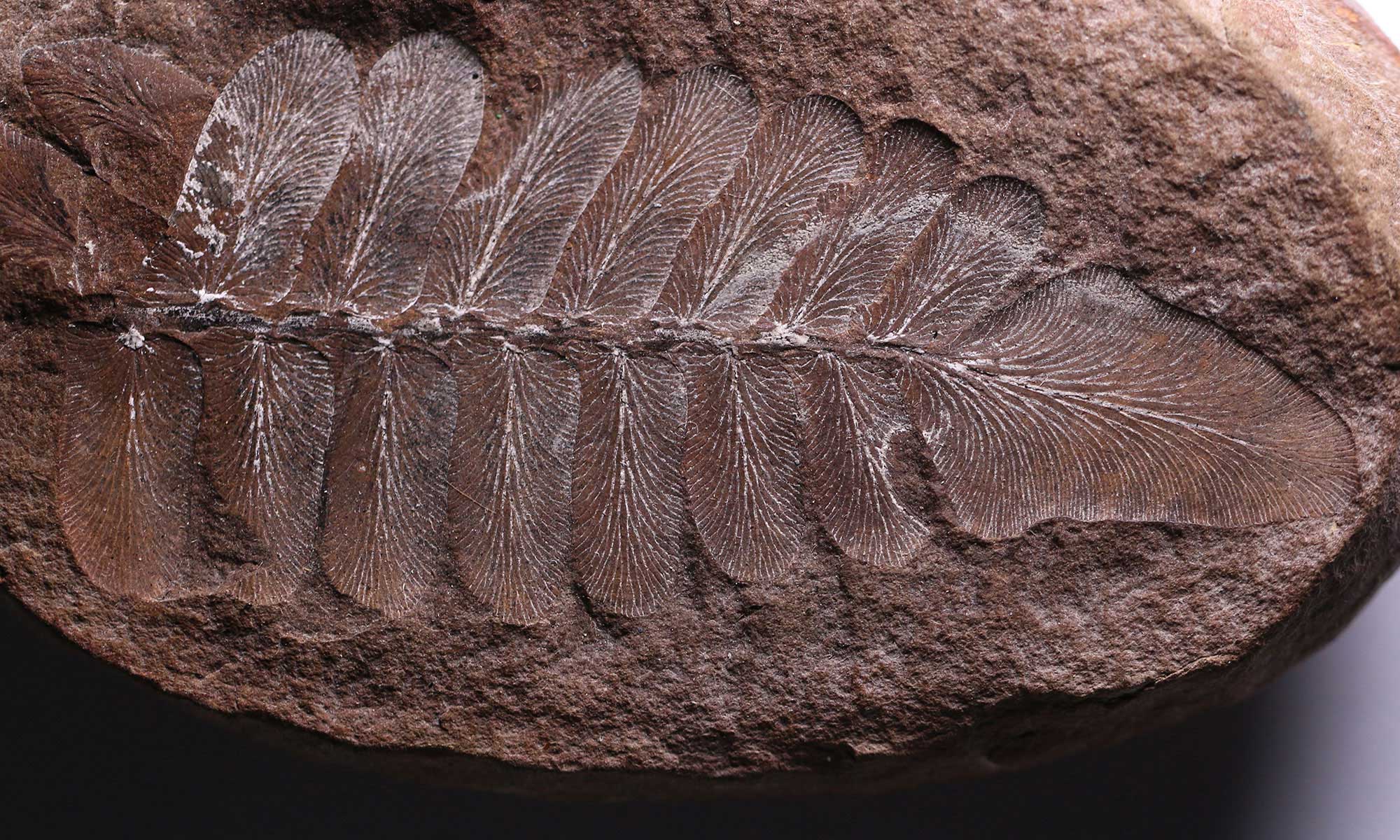The PRI fossil plant collection contains thousands of plant specimens from the Pennsylvanian Period in Illinois and the Renova Formation of Montana. It also houses a few specimens from the Green River Formation of Colorado.
Mazon Creek and other Pennsylvanian deposits of Illinois
Tropical wetland plants like seed ferns, true ferns, lycopsids, and horsetails thrived in Illinois’ swampy forests approximately 309 million years ago, during the Pennsylvanian subperiod. Debris from these plants was carried by streams and buried in layers of silt, where it was encased and preserved in concretions.
Today, the PRI fossil plant collection houses thousands of these beautifully preserved plant concretions.

Renova Formation of Montana
The Renova Formation was formed during a dynamic point in Earth’s history—the Oligocene epoch (23 million to 33 million years ago), a time of gradual transition from a tropical to a temperate climate in southwest Montana. Thin layers of clay and volcanic ash preserved beautifully the remains of plants and insects in finely laminated shale.
The PRI Paleontology Collection houses thousands of plant specimens—leaves, flowers, and fruits—from the Renova Formation, including a newly acquired collection generously donated by Paul Kirkland.

Green River Formation of Colorado
Located in western Colorado, the Green River Formation is a lacustrine deposit that contains a vast quantity of beautifully-preserved plants, insects, and vertebrates. These organisms were preserved in oil shale during the Eocene epoch, approximately 49.7 million to 50.7 million years ago.
The PRI fossil plant collection contains only a few specimens from this deposit.


